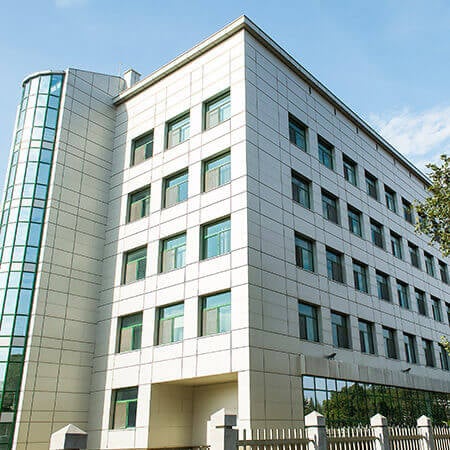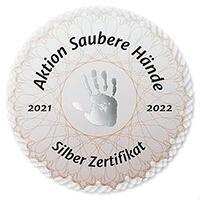In ankle arthritis, the person cannot walk and suffers from chronic pain. At the advanced stage of the pathology, the ankle is completely destroyed, so there is a need for surgical treatment. In the early stages, doctors use drugs to relieve pain and perform arthroscopic interventions. At 3-4 stages of pathology, doctors often have to resort to joint arthrodesis – an immobile connection of the bones that form it. In addition, hospitals in developed countries perform ankle replacement. When using this method, the cost of treatment is higher, but the functional results are better, and the risk of developing arthrosis of the adjacent joints of the lower limb is reduced.
Please use the services of Booking Health to travel abroad for treatment. Foreign hospitals perform new types of surgical procedures, which allow the person to permanently get rid of pain and restore the functioning of the lower limb. We will find the most suitable hospital for you and help you reduce the cost of treatment.
Content
- How does arthritis develop?
- Symptoms
- Arthroscopy for arthritis
- Arthrodesis
- Arthroscopic arthrodesis
- Total ankle replacement
- Ankle replacement outcomes
- Benefits of treatment abroad
- Treatment in European hospitals with Booking Health
How does arthritis develop?
The ankle is the third largest joint in the human body. It is one of the most frequently injured joints. The ankle accounts for about 25% of all joint injuries – only the shoulder is injured more often. In sports traumas, ankle injuries account for 45% of all injuries.
After the trauma, half of the patients suffer from post-traumatic pathological changes in the joint. They complain of pain and limited range of motion. Arthritis develops gradually and trauma is its main cause.
The development of the disease is based on damage to the hyaline cartilage. It can be instantaneous – it occurs immediately during the injury. In other patients, secondary damage to the cartilage occurs due to friction (impingement syndrome).
Impingement syndrome is a precursor to arthritis. It develops due to the proliferation of soft tissue and bone structures. Impingement syndrome leads to thickening of the synovium, its inflammation, ligament dissociation and cartilage degradation. Arthritis progresses gradually, and its advanced stage is characterized by marginal bone growths on the anterior surface of the tibia.
Ankle arthritis is damage to the ankle joint cartilage.
Ankle arthritis treatment includes pain and anti-inflammatory drugs, physical therapy, and surgery.
Cost of treatment with stem cell therapy is from €19,700, cost of total ankle replacement is from €6,181. You can find other prices on Booking Health website.
The best hospitals in Europe are:
- University Hospital Rechts der Isar Munich
- University Hospital of Ludwig Maximilian University of Munich
- Helios Hospital Berlin-Buch
- University Hospital Frankfurt am Main
- Clinic of Advanced Biological Medicine Frankfurt-am-Main
Symptoms
Arthritis causes pain in the foot and ankle. A diagnostic examination may show swelling of the ankle joint. Both active and passive movements are limited.
The pain is usually localized to the anterior surface of the ankle joint. It increases with physical load. Many patients complain of painful sensations only at the end of the day, which disappear in the morning. The disease progresses gradually. As a result, severe arthritis that affects physical activity, work capacity and quality of life develops in patients.
In case of severe pathology, patients often complain of a feeling of joint instability. When the leg is bent, a clicking or crunching sound occurs at the ankle. With fast movements, joint blocks are possible.
Arthroscopy for arthritis
The main methods for diagnosing arthritis are radiography, computed tomography and magnetic resonance imaging, but sometimes these methods are not enough to choose the best treatment option and plan the surgery. In this case, arthroscopy is performed – the most accurate, but invasive diagnostic method.
When performing arthroscopy, the doctor inserts a thin tube with a camera into the joint to see the inside of the joint. The procedure is performed through a small skin incision.
Here are some therapeutic procedures that can be performed during arthroscopy:
- Excision of a part of the synovial membrane (synovectomy).
- Dissection of adhesions.
- Resection of osteophytes (bone growths) of the tibia.
- Removal of chondromic bodies.
- Mechanical treatment of pathologically altered cartilage.
- Damage to the subchondral (located under the cartilage) bone – to stimulate the formation of fibrous cartilage in this area.
The effect of the procedure is only symptomatic. Patients have relieved pain and improved joint mobility. There is no complete restoration of the function of the lower limb. Arthroscopy is effective only for grade 1-2 arthritis.
Additional treatment methods for early stages of arthrosis: painkillers, physiotherapy, therapeutic exercises, massage, ankle-foot orthosis.
Arthrodesis
In severe arthritis, the main surgery is arthrodesis. When performing the operation, the doctor fixes the bones of the lower leg and foot. The ankle no longer flexes or extends. It is constantly in one position.
As a rule, the foot is positioned at a 90 degree angle in relation to the ankle. After this operation, a person can walk, but the choice of shoes is limited. It can only be flat.
For women, the foot angle in relation to the ankle can be set a little higher, up to 110 degrees, if desired. This will allow the patient to wear low-heeled shoes, but it will have to be worn all the time. Using shoes without a heel will overload the talonavicular joint of the foot. The front is heavily loaded. As a result, the patient may rapidly develop deforming arthrosis with persistent foot pain.
In the classic version, arthrodesis is performed during an open surgery. The doctor makes a large incision in the leg. He cuts the ligaments, removes cartilage and scars. Then the foot is fixed with needles, pins or screws.
In the postoperative period, any movements are excluded. Until the foot is completely healed, a plaster cast is used. It is often necessary to resort to external fixation devices, which are implanted for up to 3 months. After their removal, the patient undergoes rehabilitation to restore the muscles of the lower leg and walking skills.
In the first month, the patient can walk with crutches. The operated leg can be loaded no more than 50%. By the time the external fixation device is removed, the person can walk without any support. Up to 12 months, a person wears orthopedic shoes. The final outcomes of surgery can be assessed after about a year.
According to the modified scale for the hindfoot of the American Orthopaedic Foot and Ankle Society, the treatment outcomes are considered good if the patient:
- Can walk 1.5 km.
- Does not feel any pain.
- Does not use an orthosis to relieve pain.
- Has no limitations in everyday life.
Many patients experience pain when running or walking on uneven surfaces. Joint function cannot be fully restored.
Arthroscopic arthrodesis
Developed countries use the arthroscopic method of arthrodesis for the treatment of ankle arthritis. Unlike open surgery, this one is performed through minimal incisions.
For the first time, arthroscopic ankle arthrodesis was performed in 1983. It did not become widespread, since the equipment was still imperfect and it was difficult to obtain results comparable to open surgery. However, the technology of arthroscopy has developed rapidly in the 21st century. Doctors in Europe perform most operations using this technique.
Arthroscopic arthrodesis has the following benefits:
- Reduced bone healing time.
- Lower blood loss during surgery.
- Less pain in the postoperative period.
- Short hospital stay.
- Possibility of early patient's activation.
- Recovery is faster.
In European hospitals, successful treatment of ankle arthritis with this minimally invasive surgery is possible even in significant angular deformities of the ankle and bone deficiency.
Total ankle replacement
An alternative treatment option for ankle arthritis involves ankle replacement surgery. This type of surgery is called endoprosthetics.
Joint replacement has long been used in orthopedics. Both knee and hip joints are most often replaced, but replacement surgery for ankle joint arthritis is not so successful. High quality endoprostheses, which provide ankle biomechanics close to the natural ankle, have become available only recently.
If we compare arthrodesis and replacement surgery, ankle replacement is a less reliable method in terms of long-term prognosis. The artificial joint can wear out after several years, especially in young patients with high physical activity.
At the same time, the operation has important advantages, that is why it is increasingly used in developed countries. In the case of arthritis, arthrodesis is usually performed, after which the joint actually becomes immobile. The procedure results in functional disorders, which are especially strongly felt when walking fast. The adjacent joints are overloaded. The risk of developing arthritis of the foot after arthrodesis is about 15% over 10 years. Many patients suffer from knee and hip lesions.
However, replacement surgery can fully restore the function of the limb. The movements are more physiological, so the adjacent joints are not affected. In addition, endoprostheses are constantly being improved, and their service life is increased. Therefore, European hospitals are increasingly giving preference to ankle replacement for deforming arthritis.
Other indications for joint replacement include:
- Severe joint injuries.
- Rheumatoid arthritis.
- Other types of arthritis that develop due to autoimmune joint inflammation.
- Suffered infectious arthritis.
- Cancers.
Even the most severe types of arthritis can be successfully treated with replacement surgery. The most common class of endoprostheses is nonconstrained. They serve longer, so they are implanted in most patients. Constrained prostheses are used less commonly – they replace the entire ankle along with the ligamentous apparatus.
Ankle replacement outcomes
The main goal of ankle replacement is to improve the quality of life. It is achieved by eliminating pain and improving joint function.
Modern ankle prostheses wear out very slowly. They rarely cause complications. Newer types of prostheses contain artificial menisci, which soften the impact of walking. They reduce the risk of endoprosthetic loosening and extend its service life.
In most patients, the symptoms of arthrosis or rheumatoid arthritis completely disappear after ankle replacement. Joint function remains reduced, but it is significantly better than after arthrodesis. A person can wear any footwear, walk on uneven surfaces. Rapid walking and running without pain becomes possible as well. With the help of modern rehabilitation tools, the patient can restore the full function of the ankle, if desired.
New types of endoprostheses provide good biomechanics of the ankle, which is as close to natural as possible. Therefore, when walking, the adjacent joints of the lower limb are not loaded. As a result, the risk of foot lesion and the likelihood of developing knee and hip arthritis decreases.
Benefits of treatment abroad
You can go abroad for ankle osteoarthritis treatment. Developed countries use minimally traumatic, effective and reliable methods of restoring ankle functions.
The best hospitals in the world provide the following benefits of treatment:
- The use of effective conservative treatment regimens in the early stages to reduce pain and slow joint degeneration.
- The use of intra-articular injections of mesenchymal stem cells to stimulate cartilage repair.
- In the early stages of arthrosis, doctors can perform arthroscopic surgery – minimally traumatic, with a full recovery period of 4-6 weeks.
- In advanced arthrosis, surgeons can perform two types of operations: joint arthrodesis and replacement surgery.
- In some hospitals, doctors use an arthroscopic approach for arthrodesis – this treatment option is less traumatic and provides a quick recovery.
- Doctors in foreign orthopedic centers have vast experience in complex ankle replacement surgery.
- The use of cutting-edge types of endoprostheses that can serve for decades.
- Full rehabilitation allows the doctors to completely restore the functional state of the ankle after replacement surgery.
Treatment in European hospitals with Booking Health
Please use the Booking Health services to undergo treatment in European hospital. On our website, you can see the cost of treatment in different hospitals, compare prices and book a medical program at a favourable price.
Please contact Booking Health specialists to undergo treatment in European hospital. Here are our benefits for you:
- We will choose the best European hospital whose doctors specialize in the treatment of ankle arthritis.
- We will help you overcome the language barrier and establish communication with your attending physician.
- We will reduce the waiting time for the medical care program in European hospitals and book a doctor's appointment on the most suitable dates.
- We will reduce the price. The cost of treatment will be decreased due to the lack of additional coefficients for foreign patients.
- We will take care of all organizational issues: documents for entering the country, tickets, transfer from the airport, hotel, interpreter, etc.
- We will prepare a program and translate medical documents. You do not have to undergo previously performed diagnostic procedures.
- We will provide communication with the European hospital upon the completion of your medical care program.
- We will organize additional diagnostic tests and treatment in European hospitals, if necessary
- We will buy medicines abroad and forward them to your native country.
- We will help you keep in touch with the hospital and the attending physician after the completion of the medical care program.
Booking Health makes treatment in European hospitals easier, faster and cheaper. We will fully organize your trip, and you will only have to focus on restoring your health.
Authors: Dr. Vadim Zhiliuk, Dr. Sergey Pashchenko

















